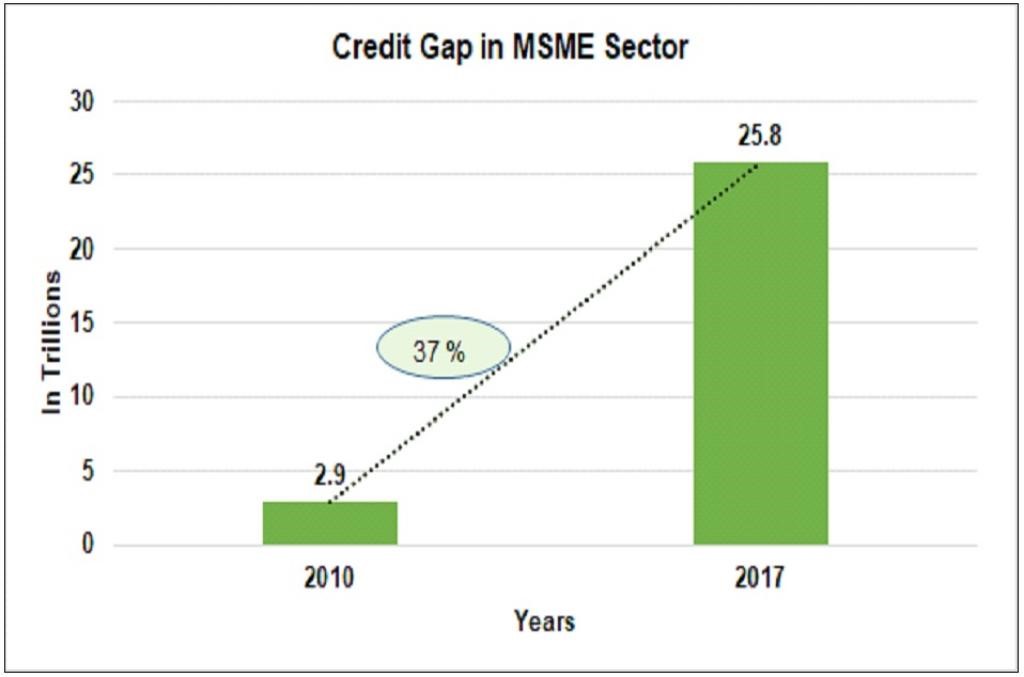Biodiversity & Environment
Need for Climate Finance for MSME
- 23 Jun 2022
- 7 min read
For Prelims: MSME, Climate Finance, CoP26, UNFCC
For Mains: Climate Finance, CoP26
Why in News?
According to a report by the Centre for Study of Science, Technology & Policy (CSTEP) published in 2018, Micro, Small and Medium Scale (MSME) generates around 110 million tonnes of CO2 equivalent. India’s MSMEs must pare emissions and climate finance maybe the nudge they need.
- The MSME sector contributes around 30% to India’s gross domestic product and employs around 120 million people.
Why are MSMEs needed to curb emissions?
- India’s Commitment to CoP 26:
- India committed to attain net zero carbon emissions by 2070 during the 26th Conference of Parties (CoP26) to the United Nations Framework Convention on Climate Change at Glasgow, Scotland in 2021.
- India would supply 50% of its energy needs through renewable sources by 2030.
- Solution: The only way to do this is to gradually phase out the use of coal, increase investment in renewable energy sources, stop deforestation and speed up the transition to electric vehicles.
- To Minimise its Carbon Footprints:
- The CSTEP report highlighted that the MSME sector used 13%of the total coal/lignite, 7% of petroleum products and 8% of the natural gas supplied in India in 2015-16.
- The MSME sector needs a push to adopt new technologies that quickly minimise its carbon footprints and make it less vulnerable to climate change and risk.
- The sector can achieve this transformation with the aid of climate finance.
- Traditional funds alone cannot help the sector to become decarbonised.
What is Climate Finance?
- Climate finance is money paid by developed countries (which are responsible for most of the historic emissions) to developing countries to help them pay for emissions reduction measures and adaptation.
- Climate finance will open doors and enable the transfer of technology and expertise from developed to developing nations, which require these resources and capacity to combat climate change at the rate that the world currently demands.
Why do MSMEs need Climate Finance?
- Huge Credit Gap:
- The MSME sector in India faces a huge credit gap, which means the difference between the total supply of credit from formal channels in the country and the addressable demand.
- According to the International Finance Corporation, the credit gap was around $37 billion in 2010 and reached $330 billion in 2017.
- In 10 years, the gap compounded annually at a rate of 37%.
- Status of Flow of Finance:
- The overall debt demand of the MSME sector is USD 882.42 billion.
- But the irony is only 16% is catered to by the formal sector and the remaining are catered to by the informal sector.
What are the Challenges Faced by MSMEs?
- Lack of awareness:
- Climate finance is still a fantasy for MSMEs, as many still struggle to obtain traditional financing.
- The MSME sector does not have awareness regarding climate finance structures and policies.
- Their knowledge of how their businesses may earn profit from climate finance is constrained by a lack of awareness on the subject and a lack of financial literacy.
- Formal Financing structure:
- Only about 16% of MSMEs in India have been found to be financed through the country’s formal banking system.
- Most climate finance in India is routed through formal financial frameworks with strict guidelines, this also imposes a major barrier on the sector to avail the benefit.
- Comprehensive Procedural needs:
- Comprehensive procedures are needed to avail international climate funds procedures.
- These include the creation of a detailed project, energy and emission audit reports, etc.
- Many small and micro-businesses cannot implement these because they lack the means or the ability to do so.
Way Forward
- The Indian government needs to work on strategies and try to bring finance to MSMEs so that the sector can decarbonise.
- The sector needs to be connected with a more formal financial credit system, which will enable them to achieve climate finance and bridge the huge credit gap.
- The major focus should be on the most accelerated aspects of decarbonisation like cleaner fuel, common combustion facilities and energy efficiency technologies that can achieve a high level of decarbonisation in the sector.
UPSC Civil Services Examination, Previous Year Question (PYQ)
Q. Which one of the following statements best describes the term ‘Social Cost of Carbon’? It is a measure, in monetary value, of the (2020)
(a) long-term damage done by a tonne of CO2 emissions in a given year.
(b) requirement of fossil fuels for a country to provide goods and services to its citizens, based on the burning of those fuels.
(c) efforts put in by a climate refugee to adapt to live in a new place.
(d) contribution of an individual person to the carbon footprint on the planet Earth.
Ans: (a)
Exp:
- The social cost of carbon (SCC) is an estimate, in dollars, of the economic damage that would result from emitting one additional ton of greenhouse gases into the atmosphere. The SCC puts the effects of climate change into economic terms to help policymakers and other decision makers understand the economic impacts of decisions that would increase or decrease emissions.
- India’s country-level social cost of carbon emission was estimated to be the highest at $86 per tonne of CO2. It means the Indian economy will lose $86 by emitting each additional tonne of CO2. India is followed by the US ($48) and Saudi Arabia ($47).
- Therefore, option (a) is the correct answer.





